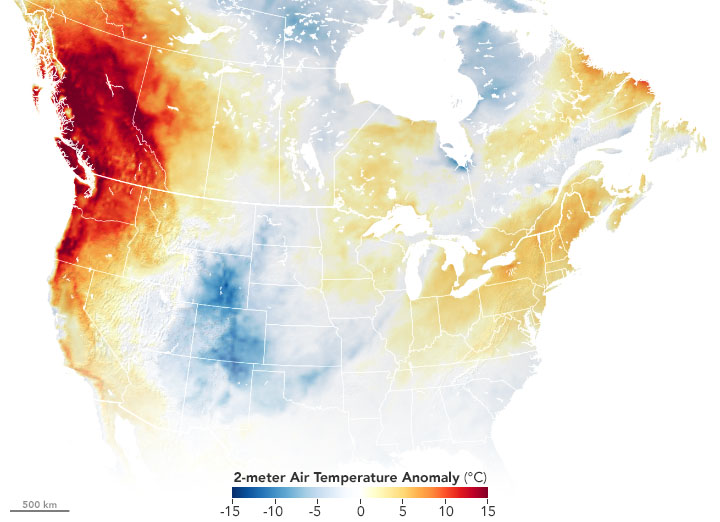How hot is too hot?
As Earth’s climate warms, heat waves are becoming more frequent and severe. The health dangers of extreme heat have scientists and medical experts increasingly concerned. And for good reason: heat stress is a leading cause of weather-related deaths in the United States each year. A recent example is the record-breaking heat wave that hit the U.S. Pacific Northwest last summer, killing hundreds.

Heat is the leading cause of weather-related deaths in the United States over the 30-year period from 1991 to 2020. Credit: NOAA
Extreme levels of heat stress have more than doubled over the past 40 years. That trend is expected to continue, says Colin Raymond of NASA’s Jet Propulsion Laboratory in Southern California. Raymond is lead author of a 2020 study on extreme heat and humidity, published in Science Advances.
 Temperature anomalies on June 27th, 2021 compared to 2014-2020 average for the same day during the 2021 western North America heat wave. Credit: NASA Earth Observatory/Joshua Stevens
Temperature anomalies on June 27th, 2021 compared to 2014-2020 average for the same day during the 2021 western North America heat wave. Credit: NASA Earth Observatory/Joshua Stevens
Weather forecasters use different tools to assess the potential for heat stress. Indeed, measurements of heat stress figure prominently in your daily weather report. In addition to forecasts of temperature and relative humidity, you’ll see something called the heat index, or apparent temperature. The heat index is a measure of what the air temperature feels like to our bodies when relative humidity is factored in. Calculated for shady areas, the heat index reflects how uncomfortable we feel when it’s hot and humid.
Because the heat index requires calibration, it’s a somewhat subjective measurement. In fact, different countries use different versions of it. For this reason, scientists conducting global climate studies are looking increasingly at another measure of heat stress called wet-bulb temperature.
Wet-bulb temperature is the lowest temperature to which an object can cool down when moisture evaporates from it. The lower the wet-bulb temperature, the easier it is for us to cool down. It measures how well our bodies cool down by sweating when it’s hot and humid, and tells us if conditions may be harmful to our health, or even deadly.
Ask NASA Climate | Articles – Climate Change: Vital Signs of the Planet